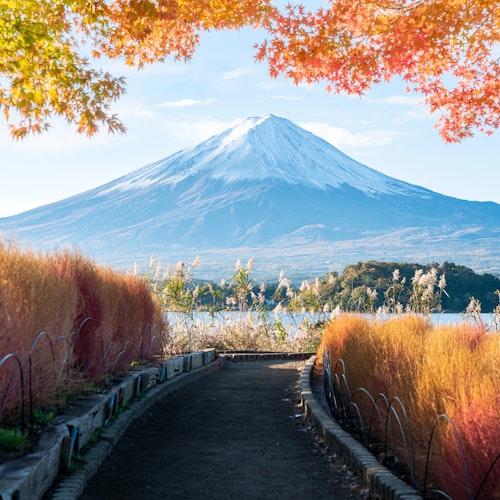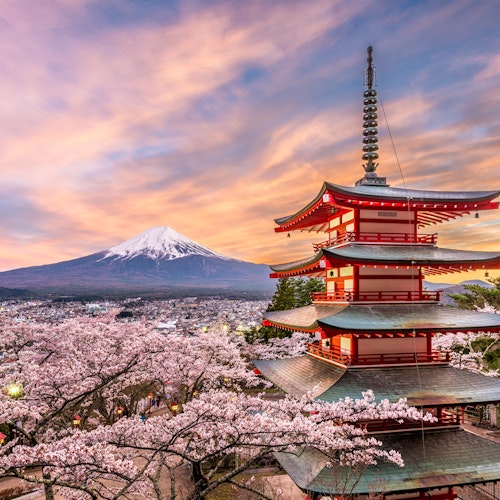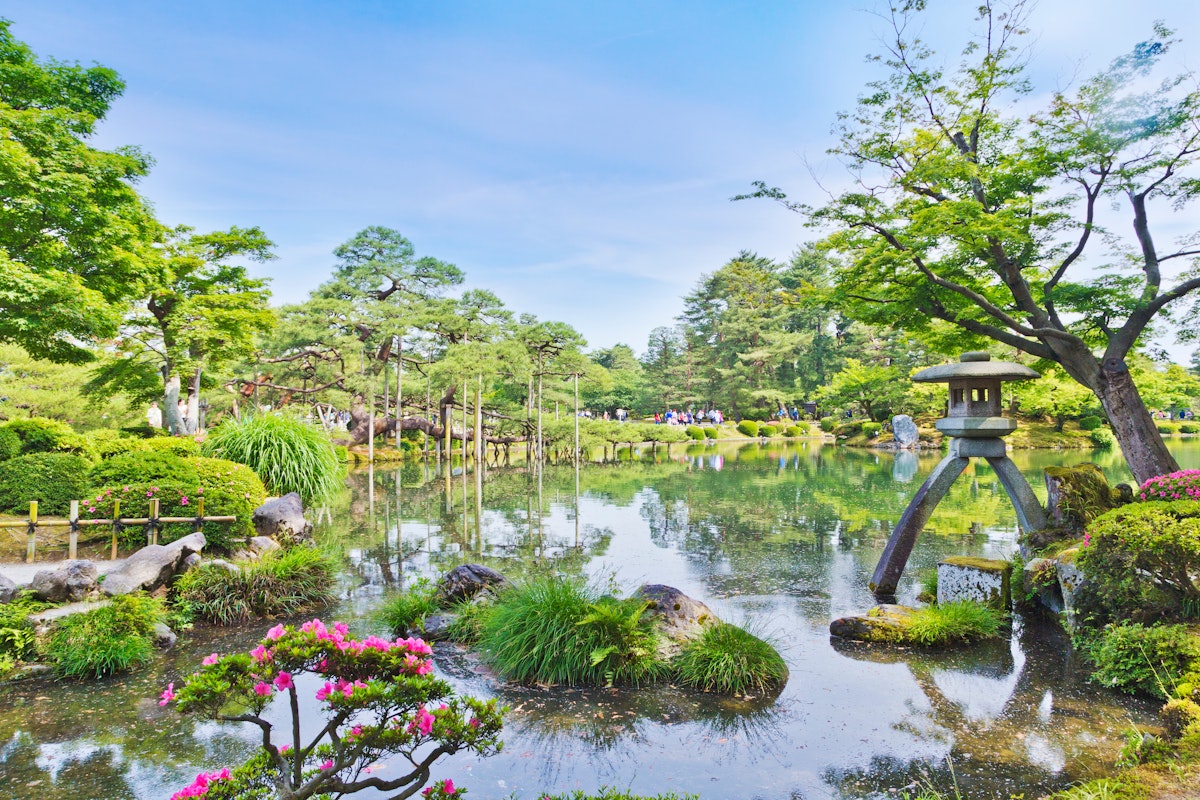
Kenrokuen Garden in Kanazawa is one of Japan's most celebrated landscape gardens. Initially a private garden for the ruling Maeda family, it was eventually opened to the public. It has since enchanted visitors with its flora, bridges, and traditional arts and tea houses.
Read more about Japanese gardens!
Kenrokuen Garden, located in Kanazawa, Japan, is one of the country's most famous gardens. It was initially developed as an outer garden for the Kanazawa Castle, serving as a private retreat for the ruling Maeda family.
The garden's development started in the 1620s and spanned several generations of the Maeda clan. It was opened to the public in the late 19th century.
"Kenrokuen" translates to "Garden of the Six Sublimities," representing the six essential attributes of an ideal landscape garden. Over the years, Kenrokuen Garden has undergone various transformations but has retained its charm, making it a must-visit historical site in Kanazawa.

The Flying Geese and Flower Viewing Bridge are two distinct attractions within Kenrokuen Garden in Kanazawa.
The Flying Geese Bridge, also known as "Gankobashi," consists of stone slabs arranged to resemble a flock of flying geese. It's a picturesque spot that serves as a perfect backdrop for photos. The bridge offers a unique aesthetic and provides a vantage point for viewing other garden features.
The Flower Viewing Bridge, or "Korokan-bashi," is another captivating garden feature. As the name suggests, it's an ideal location for viewing seasonal flowers, especially during the cherry blossom season. The bridge overlooks Kasumigaike Pond and offers an excellent flower viewing and photography opportunity.
Both bridges contribute to the serene atmosphere of Kenrokuen Garden and are must-see attractions for any visitor exploring the landscape garden.

Pine trees are a significant feature in Kenrokuen Garden, offering visual and aromatic appeal. The garden is home to various pine species, including the noteworthy raised roots pine.
These pine trees are artfully pruned and shaped, crucial in creating the garden's ethereal atmosphere. Their presence enhances the landscape and serves as a symbol of endurance and longevity in Japanese culture.
Overall, the pine trees in Kenrokuen Garden are more than just plants; they are an integral part of the garden's identity and charm.
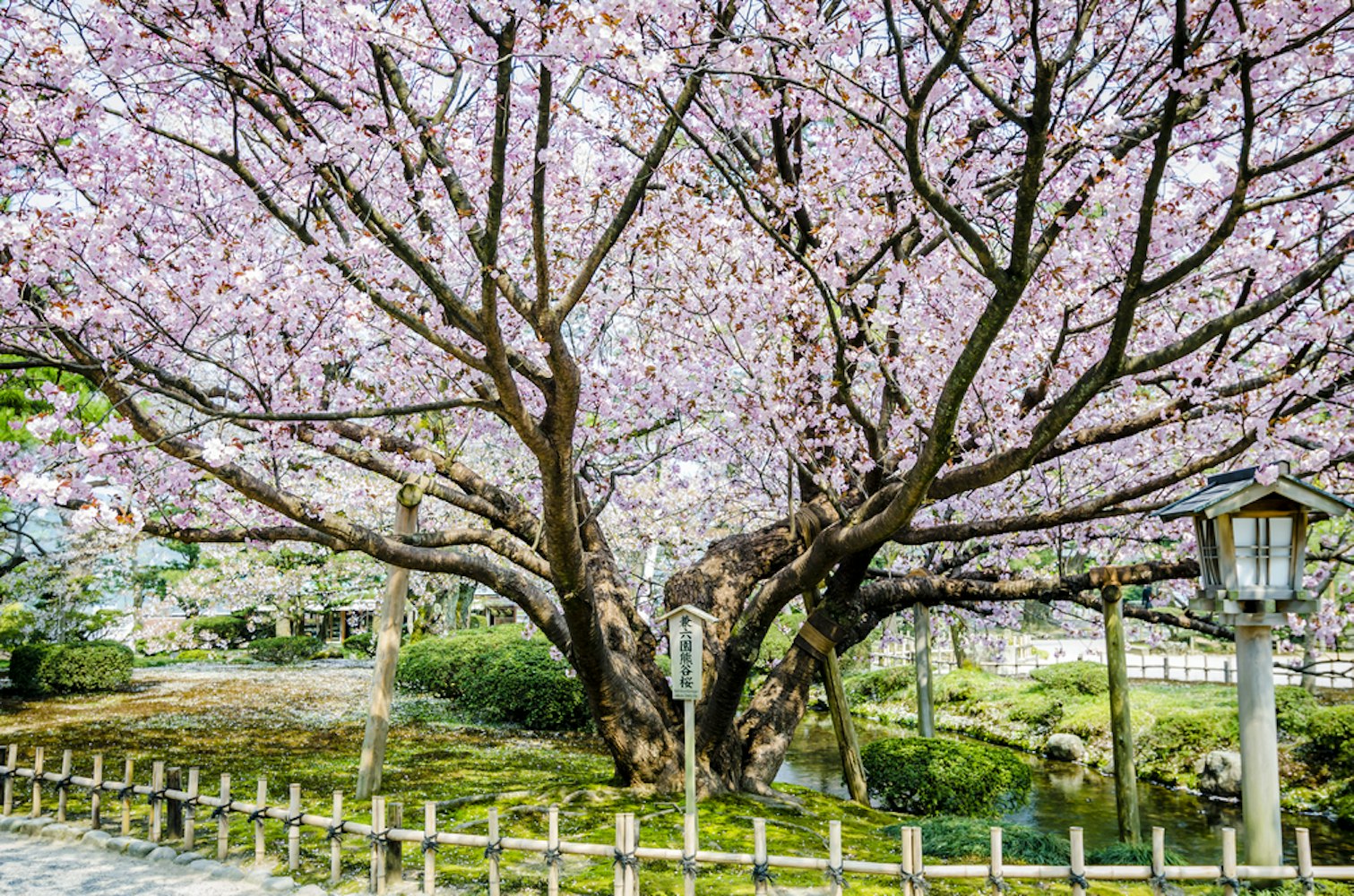
One of the most enchanting features of Kenrokuen Garden is its cherry blossoms. The garden boasts a variety of cherry trees that bloom spectacularly, usually in spring.
The cherry blossoms create a mesmerizing canopy of soft pinks and whites, transforming the garden into a dreamlike space. Nestled around Kasumigaike Pond, the cherry trees create breathtaking scenery, offering visitors enchanting photo moments and a glimpse into the ephemeral allure of these iconic Japanese blossoms.
Whether you're walking under the canopy or viewing them from a distance, the cherry blossoms add a layer of charm to the already picturesque garden, making your visit especially memorable.
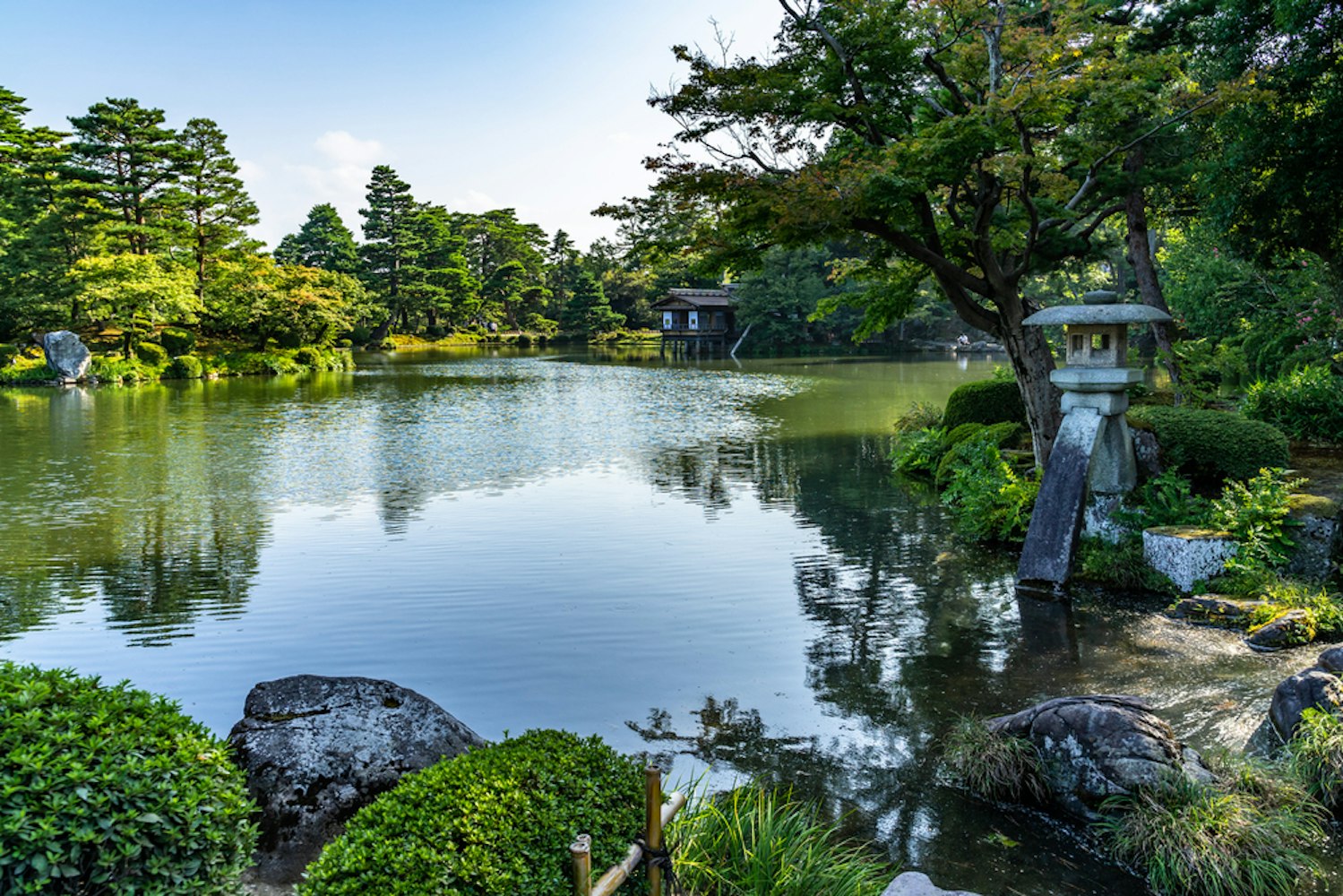
Kasumigaike Pond is often considered the crown jewel of Kenrokuen Garden in Kanazawa. This artificial pond features a beautiful, mirrored surface that perfectly reflects the surrounding flora and fauna.
Maintained through the ingenious use of natural water pressure, the pond is a thriving ecosystem for koi fish and various bird species. It serves as a central point to explore other attractions in the garden, such as nearby tea houses and the stunning Uchihashi Tei Tea House.
The pond is incredibly picturesque during the cherry blossom season, making it a must-see spot in the garden.
Getting to Kenrokuen Garden from Kanazawa Station is straightforward. Multiple options are available:
Take the Kenrokuen Shuttle Bus or other local buses that head towards Kenrokuen and Kanazawa Castle. The journey takes around 15 to 20 minutes. Get off at the "Kenrokuen" bus stop, a short walk to the garden.
Taxis are readily available at Kanazawa Station and can get you to Kenrokuen Garden in about 10 minutes, depending on traffic.
The garden is about a 30-minute stroll from the station if you prefer to walk. The path is well-signposted and takes you past several points of interest.
Choose the option that best suits your schedule and budget, and enjoy your visit to one of Japan's most famous gardens.
The ideal time to visit Kenrokuen Garden in Kanazawa is mid-November, when the cherry blossoms are in full bloom, offering a breathtaking display of colors. However, the garden is a year-round destination, bringing its unique charm each season.
Spring is notable for cherry blossoms, while autumn offers a colorful tapestry of foliage. Winter provides a serene snowscape, and the garden is equally captivating in summer with its lush greenery.
Opening Times
Regular Hours:
7:00 to 18:00 (March to October 15)
8:00 to 17:00 (October 16 to February)
Early Admission Hours:
From 5:00 (April to August from 4:00, November to February from 6:00)
Early admission visitors must exit the garden before the start of regular hours
Admission Fee
Adults (aged 18 and over): 310 yen
Children (aged 6 – 18): 100 yen
As you wander through the breathtaking Kenrokuen Garden and beyond, you'll quickly realize why it is among Japan's most famous and revered beautiful gardens. Every step you take reveals a new enchanting feature, from the meticulously designed landscape garden with its vibrant colors and delicate blooms to the ancient stone lanterns that guide your path with their soft glow.
The gentle sound of flowing water from the tranquil streams and cascading waterfalls creates a soothing symphony that lulls you into a state of serenity. Immerse yourself in the captivating beauty of Kenrokuen Garden, where nature's artistry is on full display in every corner.
The meticulous arrangement of seasonal flowers and meticulously pruned trees showcases the harmonious balance between man and nature. With each visit, you'll discover new nooks and crannies with unique charm and stories to tell.
So, when you find yourself in the charming city of Kanazawa, make sure not to miss out on this true gem. Just a short distance from Kanazawa Station, Kenrokuen Garden awaits, ready to captivate your senses and leave an indelible mark on your heart.
The entrance fee is 500 Yen. However, it is free for Kanazawa citizens and children under 18.
Situated on the elevated grounds adjacent to Kanazawa Castle, also known before as a landscape garden called renchitei, the garden spans an impressive 11.4 hectares in the heart of Kanazawa. Its picturesque location offers a captivating experience that seamlessly blends nature and history.
Yes, you can bring your food and drinks to enjoy in designated areas within the garden. However, please dispose of trash properly and keep the garden clean for others.
There are also various tea houses within the garden where you can purchase traditional Japanese snacks while enjoying a peaceful break amidst nature's beauty.
The garden is quite beautiful, but there certainly are limitations due to hills – particularly for those in manual wheelchairs or walkers. However, some garden areas may have steep slopes or stairs, so planning your route is recommended to avoid difficulties.
Additionally, there is an observation deck with a beautiful view of the garden that can be accessed by elevator.
Yes, photography is allowed in the garden, and there are plenty of photo-worthy spots to capture. However, please be mindful of other visitors and avoid causing any disturbance while taking photos.
Additionally, some areas may restrict tripods or flash photography, so checking with staff members before setting up your equipment is recommended.
